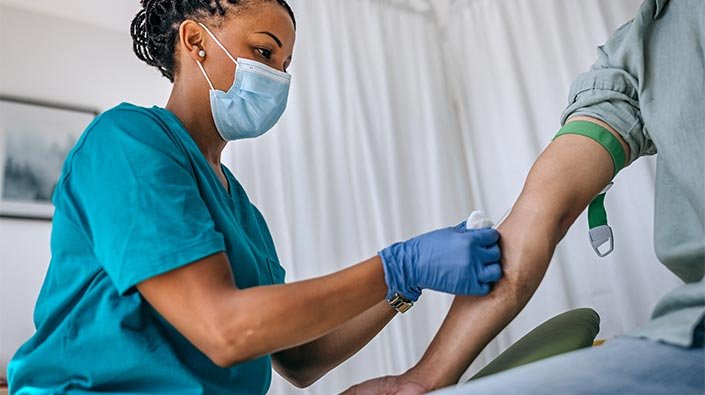Sustainable Procurement and Disposal Practices for Blood Collection Tubes in Hospitals
Summary
- Hospitals in the United States are increasingly focusing on sustainable procurement and disposal practices for blood collection tubes.
- Efforts include implementing environmentally friendly purchasing policies, reducing waste generation, and Proper Disposal of used tubes.
- Collaboration with suppliers, staff training, and tracking environmental impact are key strategies to ensure sustainable practices in hospital supply and equipment management.
Introduction
In recent years, hospitals in the United States have been making strides towards implementing sustainable practices in their operations. One area of focus is the procurement and disposal of blood collection tubes, which are essential in healthcare settings for diagnostic testing and blood donation purposes. This article will explore the measures that hospitals are taking to ensure the sustainable procurement and disposal of blood collection tubes, and the importance of these efforts in the broader context of hospital supply and equipment management.
Sustainable Procurement Practices
When it comes to procuring blood collection tubes, hospitals are increasingly prioritizing environmentally friendly options. This includes sourcing tubes made from recycled materials, reducing the use of plastics, and opting for suppliers that have strong sustainability practices. Some of the measures that hospitals are taking in this regard include:
1. Implementing Environmentally Friendly Purchasing Policies
- Developing procurement policies that prioritize products with lower environmental impact.
- Setting specific sustainability criteria for suppliers to meet when providing blood collection tubes.
- Participating in group purchasing organizations that prioritize sustainable options for medical supplies.
2. Collaborating with Suppliers
- Engaging with blood collection tube suppliers to understand their sustainability practices and encourage improvements.
- Working with suppliers to customize orders to reduce packaging waste and use of harmful materials.
- Exploring potential partnerships with suppliers to develop more sustainable alternatives to traditional blood collection tubes.
3. Training Staff on Sustainable Practices
- Providing employees with education and training on the importance of sustainability in healthcare settings.
- Offering guidance on how to properly use and dispose of blood collection tubes to minimize environmental impact.
- Encouraging staff to be mindful of their choices when selecting medical supplies to promote sustainable procurement practices.
Proper Disposal of Blood Collection Tubes
Once blood collection tubes have been used, hospitals must ensure that they are disposed of properly to minimize their environmental impact. This involves adhering to strict guidelines for waste management and disposal, as well as implementing strategies to reduce the generation of waste in the first place. Some of the key measures that hospitals are taking in this area include:
1. Waste Reduction Strategies
- Implementing protocols to minimize the use of unnecessary blood collection tubes.
- Encouraging the use of reusable or reprocessable tubes where possible.
- Exploring new technologies and processes for sample collection that generate less waste.
2. Proper Disposal Procedures
- Following federal and state Regulations for the Proper Disposal of medical waste, including blood collection tubes.
- Working with waste management companies that specialize in handling medical waste safely and responsibly.
- Ensuring that staff are trained on how to label, segregate, and package used blood collection tubes for disposal.
3. Tracking Environmental Impact
- Monitoring and tracking the environmental impact of blood collection tube disposal practices.
- Regularly assessing waste generation and disposal processes to identify areas for improvement.
- Implementing reporting mechanisms to measure progress towards sustainability goals related to the disposal of blood collection tubes.
Conclusion
Overall, hospitals in the United States are taking significant steps to ensure the sustainable procurement and disposal of blood collection tubes. By implementing environmentally friendly purchasing policies, reducing waste generation, and properly disposing of used tubes, healthcare facilities can minimize their environmental footprint and contribute to a more sustainable healthcare system. Collaboration with suppliers, staff training, and tracking environmental impact are key strategies that hospitals can employ to promote sustainable practices in hospital supply and equipment management.

Disclaimer: The content provided on this blog is for informational purposes only, reflecting the personal opinions and insights of the author(s) on the topics. The information provided should not be used for diagnosing or treating a health problem or disease, and those seeking personal medical advice should consult with a licensed physician. Always seek the advice of your doctor or other qualified health provider regarding a medical condition. Never disregard professional medical advice or delay in seeking it because of something you have read on this website. If you think you may have a medical emergency, call 911 or go to the nearest emergency room immediately. No physician-patient relationship is created by this web site or its use. No contributors to this web site make any representations, express or implied, with respect to the information provided herein or to its use. While we strive to share accurate and up-to-date information, we cannot guarantee the completeness, reliability, or accuracy of the content. The blog may also include links to external websites and resources for the convenience of our readers. Please note that linking to other sites does not imply endorsement of their content, practices, or services by us. Readers should use their discretion and judgment while exploring any external links and resources mentioned on this blog.
